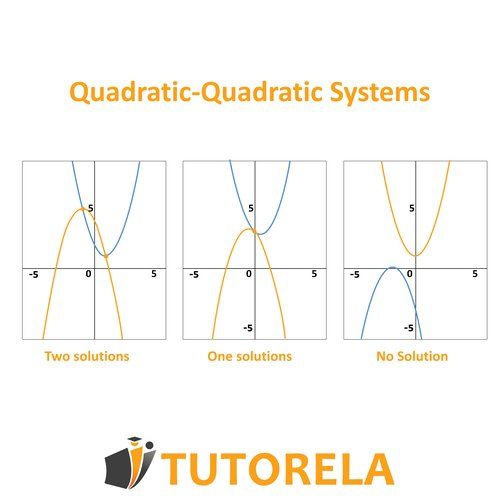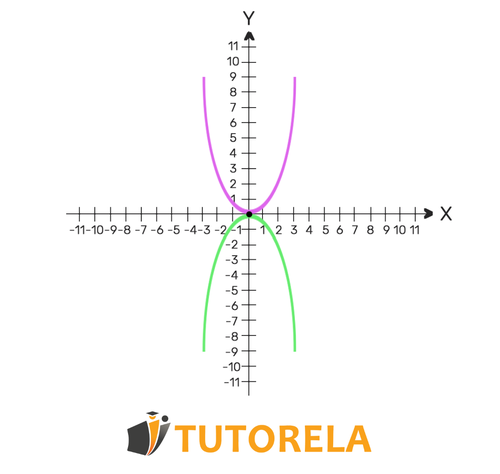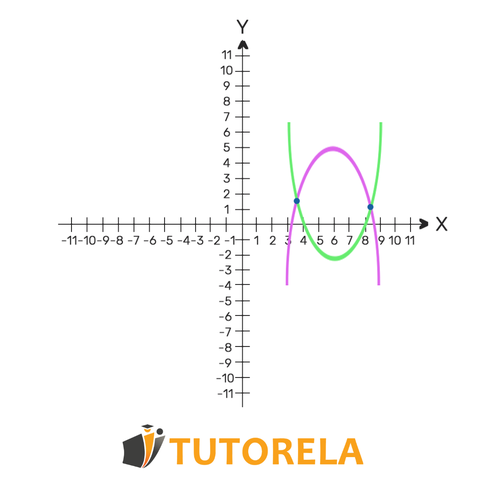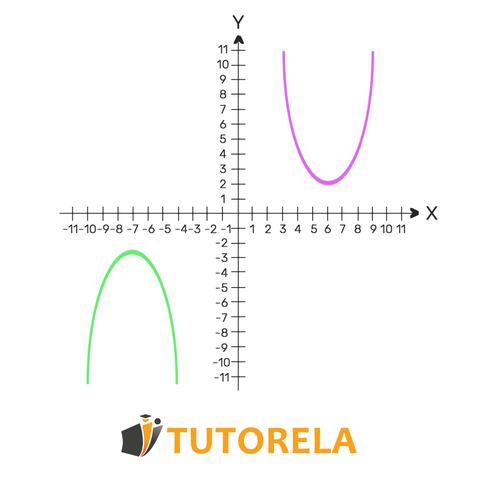In the system of quadratic equations, we must find the and that satisfy the first equation as well as the second. The system can have one solution, two solutions, or even none. The concept of the solution of the system of equations highlights the points of intersection of the function. At the same points we find - the functions intersect. If one solution is found - the functions intersect once. If two solutions are found - the functions intersect twice. If no solution is found - the functions never intersect.













